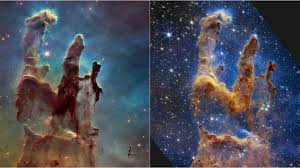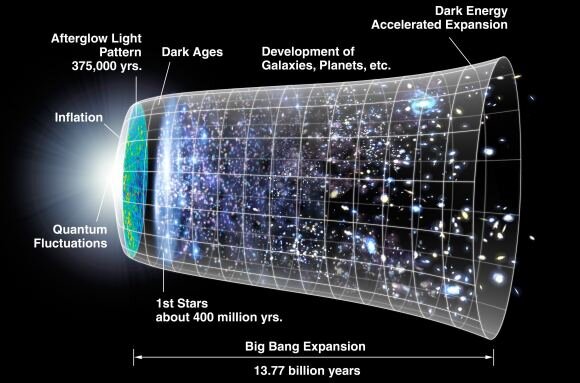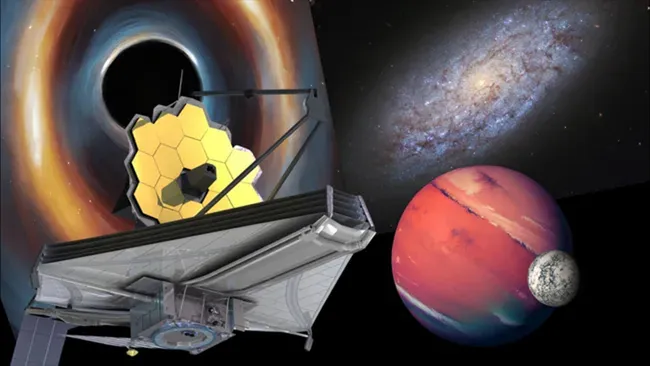INTRODUCTION:

Ever wondered what the universe looked like when it was just a baby? Well, get ready to be amazed. The James Webb Space Telescope (JWST) is giving us an unprecedented peek into the universe’s earliest moments, capturing breathtaking images that are rewriting our understanding of how it all began. It’s like looking at your own baby photos and realizing how much you’ve changed – except these “baby pictures” are of the entire universe. Join me on a journey as we explore the fascinating world of Cosmic Dawn and uncover the secrets JWST is revealing about the universe’s incredible beginnings.
What is Cosmic Dawn?
Cosmic Dawn refers to the pivotal period in the universe’s history when the first stars and galaxies formed, marking the end of the “Cosmic Dark Ages.” This era, occurring approximately 13.5 billion years ago, is crucial for understanding the evolution of the universe. During Cosmic Dawn, several significant processes took place:

- First Light:
- The emergence of the first stars and galaxies illuminated the universe for the first time. This light transformed the previously dark cosmos, allowing for the formation of more complex structures.
2. Reionization:
- Following the formation of these early stars, a process known as reionization occurred. This involved the transition of the universe from a neutral state, primarily composed of hydrogen atoms, to an ionized state where electrons were separated from protons due to intense radiation from these new stars. Reionization played a critical role in shaping the universe as we know it today.
Your ultimate stargazing adventure starts here. [Shop Now]
Importance of Cosmic Dawn
Understanding Cosmic Dawn is essential for several reasons:
- Evolution of Cosmic Structures: It marks a significant transition in the universe’s development, leading to the diverse range of cosmic structures we observe today.
- Insights into Fundamental Physics: Studying this period can provide answers to fundamental questions in physics and cosmology, including insights into dark matter and dark energy.
- Technological Advancements in Astronomy: Observing Cosmic Dawn presents challenges due to its faint signals; however, advancements in telescopes like the James Webb Space Telescope (JWST) are enabling scientists to explore this era more effectively.
Current Research and Observations
Recent studies have focused on identifying distant galaxies formed during Cosmic Dawn. For example:
- Research indicates that Cosmic Dawn likely occurred between 250 million to 350 million years after the Big Bang, as scientists analyze light from some of the most distant galaxies known.
- The JWST aims to observe these early galaxies directly, providing valuable data about their formation and characteristics.
Cosmic Dawn represents a transformative epoch in our universe’s history, characterized by the birth of stars and galaxies and the onset of reionization. As researchers continue to explore this fascinating period using advanced technologies, they hope to unlock secrets about our universe’s origins and its subsequent evolution.
Studying Cosmic Dawn, scientists can gain insights into both the fundamental processes that shaped our cosmos and the conditions that allowed life as we know it to emerge.
Want To Know More About:
- The Top 10 Most Amazing Discoveries in Space Exploration.
- Top 10 Most Dangerous Space Missions
- Time Travel in Space: Is it Possible?
How Does JWST Reveal Cosmic Dawn?

The James Webb Space Telescope (JWST) is a groundbreaking observatory designed to study the universe primarily in infrared light. This capability allows it to peer through dust and gas, providing unprecedented views of distant galaxies and stars from the early universe, specifically during the era known as Cosmic Dawn. Here’s how JWST reveals this fascinating period:
1. Detect Faint Signals
JWST is equipped with advanced instruments that enable it to detect faint light from distant galaxies. This ability is crucial for observing the early universe, as the light from these galaxies has traveled billions of years to reach us.
- Example: JWST has successfully identified some of the most distant galaxies known, including those that existed around 290 million years after the Big Bang. These observations provide vital insights into how the first galaxies formed and evolved.
2. Study the Formation of Stars and Galaxies
JWST’s powerful capabilities allow it to observe the formation of stars and galaxies in real-time. By capturing images and spectra of these early cosmic structures, scientists can better understand the processes that led to their creation.
- Example: As part of its observations, JWST has discovered several proto-globular clusters—dense collections of stars—offering clues about how star formation occurred during Cosmic Dawn.
3. Analyze the Composition of the Universe
One of JWST’s key features is its ability to perform spectroscopy, which involves analyzing light from celestial objects to determine their composition. This capability helps scientists understand what elements were present in early galaxies and how they contributed to cosmic evolution.
- Example: Using its Near-Infrared Spectrograph (NIRSpec), JWST has obtained spectra from distant galaxies, revealing information about their chemical makeup and star formation rates. This data is essential for constructing models of how galaxies formed and evolved over time.
Current Discoveries
Recent observations by JWST have led to significant discoveries related to Cosmic Dawn:
- The telescope has identified multiple candidate galaxies from the first 650 million years after the Big Bang, providing a clearer picture of galaxy formation during this critical period.
- Notably, JWST observed a galaxy with a redshift above 14, indicating it existed at a time when the universe was still very young, further pushing our understanding of early cosmic structures.
The James Webb Space Telescope is revolutionizing our understanding of Cosmic Dawn by detecting faint signals from distant galaxies, studying their formation, and analyzing their composition. As JWST continues its mission, it promises to uncover more secrets about the early universe, enhancing our knowledge of how stars and galaxies came into existence.
Combining its observations with future missions like NASA’s Roman Space Telescope, scientists aim to develop a comprehensive understanding of Cosmic Dawn and its implications for the evolution of our universe.
Practical Examples: JWST’s Cosmic Dawn Discoveries
The James Webb Space Telescope (JWST) has made groundbreaking discoveries related to Cosmic Dawn, the era when the first stars and galaxies formed. Here are two notable examples:
1. GN-z11
JWST observed the galaxy GN-z11, which existed just 400 million years after the Big Bang. This galaxy serves as a relic from the Cosmic Dawn era, providing invaluable insights into the conditions of the early universe.
- Significance: GN-z11 is one of the most distant galaxies ever observed, helping astronomers understand how galaxies formed and evolved during this critical period in cosmic history.
2. CEERS-93316
Another significant discovery by JWST is the galaxy CEERS-93316, which is forming stars at a rate 20 times faster than the Milky Way. This remarkable finding indicates that star formation was highly active during Cosmic Dawn.
- Significance: The rapid star formation in CEERS-93316 challenges existing theories about how quickly stars could form in the early universe and provides new data for understanding galaxy evolution.
The Future of Cosmic Dawn Research
As JWST continues to explore the universe, scientists expect to uncover more secrets about Cosmic Dawn. Future research will focus on:
1. Unveiling the First Stars and Galaxies
JWST will study the formation of the first stars and galaxies, providing deeper insights into how these structures emerged from primordial gas and dust. This research is crucial for understanding the transition from a dark universe to one filled with light.
2. Understanding Reionization
Scientists will investigate the reionization process, which marks the transition of the universe from a neutral state to an ionized state. Understanding this process is essential for comprehending how early stars and galaxies contributed to shaping the universe’s structure.
The discoveries made by JWST regarding Cosmic Dawn are reshaping our understanding of the early universe. By observing distant galaxies like GN-z11 and CEERS-93316, scientists are gaining insights into star formation and galaxy evolution during this pivotal era.
As JWST continues its mission, it promises to unveil even more secrets about Cosmic Dawn, enhancing our knowledge of how the universe came to be as we see it today. The ongoing research will help answer fundamental questions about cosmic evolution, paving the way for future explorations in astronomy and cosmology.
Conclusion:
The James Webb Space Telescope is truly a marvel of human ingenuity, opening a new window into the universe’s awe-inspiring past. It’s like we’re finally getting to see the universe’s own baby photos! As JWST continues its journey of exploration, we can expect to uncover even more mind-blowing secrets about the universe’s formation and evolution. Who knows, maybe one day we’ll even understand how it all began! The future of space exploration is bright, and the discoveries that await us are truly limitless.
Disclosure/Disclaimer:
This article contains affiliate links, supporting our educational and informative contents creation.
We appreciate supporting us to create more value and fascinating contents here on our site for educational purposes only.





